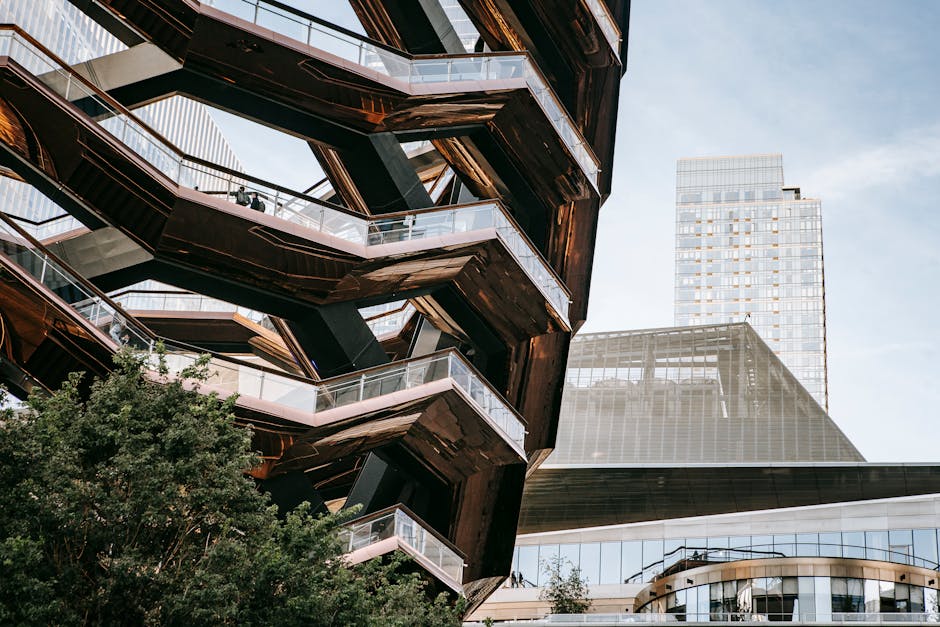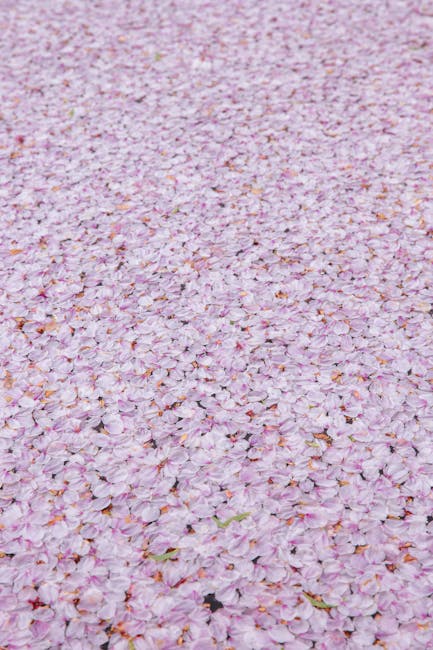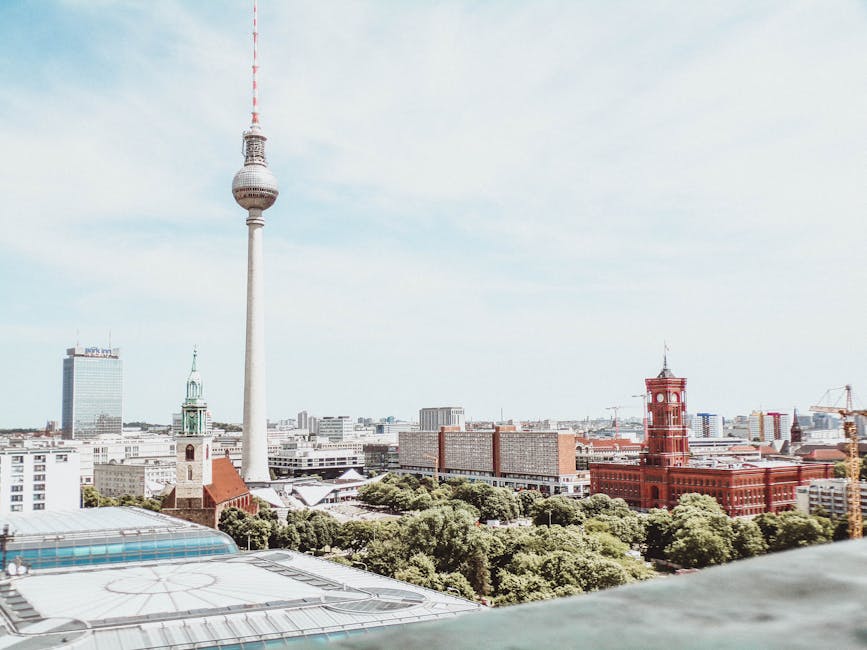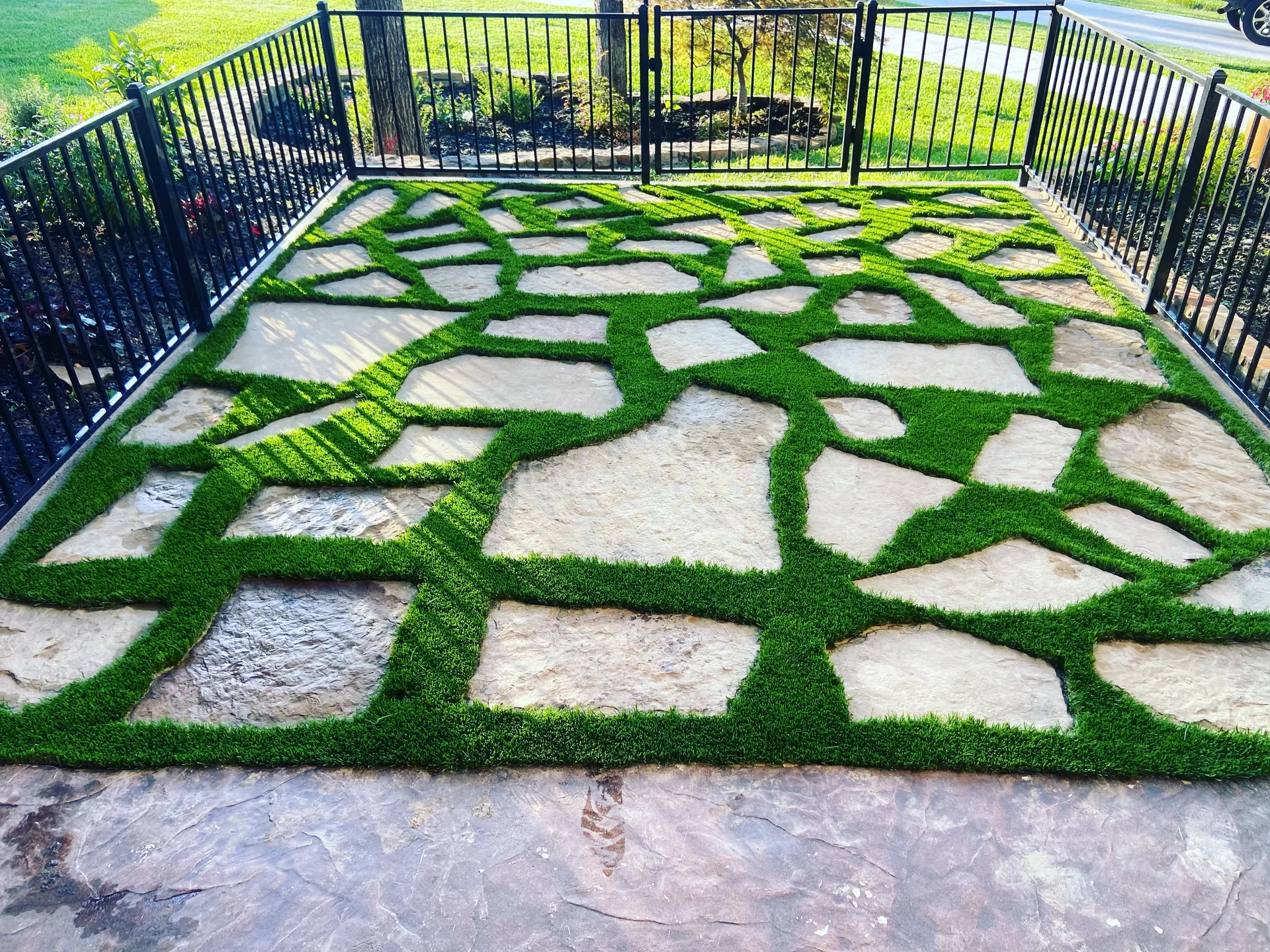
The Importance of Outdoor Spaces in Urban Environments
In today’s rapidly urbanizing world, the significance of outdoor spaces in urban environments has never been more pronounced. As cities expand and populations grow, green spaces provide essential benefits that contribute to the well-being of urban residents. Research consistently highlights the physical and psychological advantages associated with access to outdoor spaces.
One of the primary benefits of these areas is their impact on mental health. Studies have shown that exposure to green environments can reduce stress levels, improve mood, and enhance overall mental well-being. For instance, a 2019 study published in the journal Scientific Reports found that spending at least two hours a week in nature is associated with better health and well-being.
Moreover, outdoor spaces promote physical activity, which is crucial for combating the sedentary lifestyles that are prevalent in urban settings. Parks, playgrounds, and sports fields encourage activities such as walking, jogging, and team sports, all of which contribute to physical health. The Centers for Disease Control and Prevention (CDC) emphasizes that regular physical activity can help manage weight, reduce the risk of chronic diseases, and promote better sleep.
In addition to health benefits, green spaces play a vital role in environmental sustainability. Urban green spaces help mitigate the urban heat island effect, which occurs when cities experience higher temperatures than their rural surroundings due to human activities. Vegetation, particularly turf, absorbs sunlight and cools the surrounding air, thus reducing overall city temperatures. According to the Environmental Protection Agency (EPA), green spaces can lower temperatures in urban areas by up to 2°F.
Urban outdoor spaces also contribute to improved air quality. Plants absorb pollutants such as ozone, nitrogen dioxide, and particulate matter, which helps reduce pollution levels. The World Health Organization (WHO) identifies poor air quality as a significant risk factor for health problems, and increasing green spaces can play a part in alleviating this issue.
Furthermore, these spaces offer substantial social benefits. They serve as communal areas where people can gather, socialize, and build a sense of community. Public parks and gardens provide venues for social interaction, cultural events, and recreational activities, fostering a cohesive community spirit. Research underscores the association between accessible green spaces and enhanced social cohesion.
In summary, the importance of outdoor spaces in urban environments is multi-faceted, encompassing mental and physical health, environmental sustainability, and social cohesion. As cities continue to evolve, prioritizing the development and maintenance of green spaces will be crucial in enhancing the quality of urban life.
Understanding High-Quality Turf: Characteristics and Benefits
High-quality turf plays a crucial role in urban landscaping projects, contributing significantly to the aesthetic, functional, and environmental value of outdoor spaces. To better understand its importance, it is essential to delve into the characteristics and benefits that define high-quality turf.
Characteristics of High-Quality Turf
High-quality turf is distinguished by several key characteristics:
- Density: A dense turf canopy indicates a healthy, robust grass plant population, reducing soil erosion and weed invasion.
- Uniformity: Consistent color, texture, and growth are hallmarks of high-quality turf, ensuring a visually appealing and even surface.
- Durability: Turf that can withstand heavy foot traffic and diverse weather conditions demonstrates resilience and long-term viability.
- Root Health: A deep, well-developed root system enhances drought resistance and nutrient uptake, vital for sustainable growth.
- Low Maintenance: Turf that requires minimal fertilization, irrigation, and mowing is cost-effective and environmentally friendly.
- Pest and Disease Resistance: High-quality turf resists common pests and diseases, reducing the need for chemical interventions.
Benefits of High-Quality Turf
Implementing high-quality turf offers multiple benefits, particularly in urban settings:
Environmental Benefits:
- Air Quality Improvement: Turf absorbs carbon dioxide and releases oxygen, contributing to cleaner air.
- Heat Reduction: Grass surfaces can be significantly cooler compared to hard surfaces like asphalt and concrete, mitigating the urban heat island effect.
- Water Management: Quality turf enhances water infiltration and reduces runoff, aiding in groundwater recharge and decreasing flood risks.
- Soil Stabilization: Turf’s root system helps bind soil, preventing erosion and promoting soil health.
Social and Aesthetic Benefits:
- Recreational Spaces: High-quality turf provides safe, appealing areas for recreation and relaxation, enhancing community well-being.
- Visual Appeal: Lush, green lawns improve the visual landscape of urban areas, potentially increasing property values and community pride.
- Noise Reduction: Turf acts as a natural sound absorber, reducing noise pollution in urban environments.
Economic Benefits:
- Cost Savings: Despite higher initial costs, high-quality turf can save money long-term due to its durability and low maintenance requirements.
- Employment: Turf installation and maintenance provide job opportunities, supporting local economies.
By considering these characteristics and benefits, urban planners and landscapers can make informed decisions to integrate high-quality turf into urban design, fostering sustainable, attractive, and functional outdoor spaces.
The Environmental Impact of Turf in Urban Landscaping
High-quality turf in urban landscaping projects can significantly impact the environment. The following points highlight its multifaceted influence on urban ecosystems:
Improvement in Air Quality
Grass, including high-quality turf, plays a crucial role in air purification. According to the United States Environmental Protection Agency (EPA), turfgrass absorbs dust and various pollutants such as carbon dioxide, thereby lowering overall pollution levels. This natural filtration process helps to mitigate some of the adverse effects of urbanization on air quality.
Reduction of Urban Heat Island Effect
Urban areas are often significantly warmer than their rural surroundings, a phenomenon known as the Urban Heat Island (UHI) effect. The EPA reports that lawn grasses can be up to 30 degrees Fahrenheit cooler than asphalt and up to 14 degrees cooler than bare soil. By incorporating high-quality turf, cities can reduce their ambient temperatures, thereby lessening the UHI effect.
Stormwater Management
High-quality turf is effective in managing stormwater runoff. The root systems of turfgrasses enhance soil structure, increasing its permeability and reducing surface runoff. The Turfgrass Water Conservation Alliance (TWCA) highlights that well-maintained turf can absorb rainfall efficiently, helping to prevent flooding and soil erosion in urban environments.
Carbon Sequestration
Grass fields, including high-quality turf, can capture and store carbon dioxide, a process known as carbon sequestration. According to a study published in the *Journal of Environmental Quality*, turfgrass systems in the United States sequester approximately 20 to 45 grams of carbon per square meter annually. This contributes to the reduction of atmospheric CO2 levels, helping to combat climate change.
Habitat Creation
High-quality turf provides essential green spaces that support urban biodiversity. The Urban Ecology Network notes that these areas can offer habitats for various species of birds, insects, and small mammals, which are often displaced by urbanization. By integrating turf into urban landscapes, planners can help maintain ecological balance and promote biodiversity.
Energy Conservation
The cooling effect of turf can also contribute to energy conservation. The EPA points out that areas with abundant turf and vegetation require less energy for cooling buildings compared to those dominated by concrete and asphalt. Lower energy consumption translates to reduced greenhouse gas emissions, enhancing the sustainability of urban areas.
Overall, the use of high-quality turf in urban landscaping projects offers numerous environmental benefits, making it a viable option for cities aiming to enhance their ecological footprint. While the implementation requires careful planning and proper maintenance, the positive impacts on air quality, temperature regulation, water management, carbon sequestration, biodiversity, and energy conservation make it a compelling choice for urban planners.
The Economic Benefits of Using High-Quality Turf
The utilization of high-quality turf in urban landscaping projects can yield significant economic benefits, making it an appealing choice for city planners, developers, and municipalities. Several key factors contribute to the economic advantages of using superior turf over other landscaping solutions.
First, high-quality turf has the potential to reduce long-term maintenance costs. According to a report by the University of Minnesota Extension, well-maintained turfgrass experiences fewer issues with weeds, pests, and diseases, which in turn minimises the need for expensive treatments and interventions. This translates to lower spending on herbicides, pesticides, and labor over the lifespan of the turf.
Moreover, high-quality turf can enhance property values. Research from the National Association of Realtors (NAR) indicates that aesthetically pleasing and well-maintained green spaces can increase the perceived value of nearby properties by up to 15%. This positive impact on property valuation applies not only to residential areas but also to commercial and mixed-use developments.
High-quality turf can also attract more visitors and residents to urban areas, spurring economic growth. A study by the Trust for Public Land (TPL) found that accessible, attractive outdoor spaces contribute to an increased sense of community and higher foot traffic in urban settings. This, in turn, boosts local businesses such as cafes, restaurants, and retail shops, generating greater economic activity in the area.
In addition, the energy-saving benefits of high-quality turf should not be overlooked. Turfgrass plays a role in natural cooling by reducing the heat island effect common in urban environments. According to the U.S. Environmental Protection Agency (EPA), urban areas with ample green space can be significantly cooler than those dominated by non-permeable surfaces like asphalt. This cooling effect can lower energy costs by decreasing the need for air conditioning during hot months.
Furthermore, high-quality turf can help municipalities and developers avoid costs associated with stormwater management. The dense, fibrous root systems of well-maintained turf improve water infiltration and reduce runoff, as highlighted by the Turfgrass Producers International (TPI). This can lessen the burden on urban drainage systems and diminish the risk of flood-related damage, leading to savings on infrastructure repairs and emergency services.
In summary, the economic benefits of using high-quality turf in urban landscaping projects are multifaceted and substantial. From reducing maintenance and energy costs to enhancing property values and supporting local economies, the advantages make high-quality turf a prudent and financially sound investment for urban landscapes.
Case Studies of Successful Urban Landscaping Projects with Turf
Numerous urban landscaping projects around the world have successfully used high-quality turf to transform outdoor spaces, demonstrating its versatility and effectiveness. These case studies provide valuable insights into the practical applications and benefits of using quality turf in urban environments.
New York City’s High Line
The High Line is an elevated linear park, greenway, and rail trail created on a former New York Central Railroad spur on the west side of Manhattan in New York City. The project involved the installation of high-quality turf to create a sustainable and visually appealing green space.
The use of turf in the High Line project helped in reducing the urban heat island effect, improving air quality and providing a much-needed recreational area for residents. The park’s success has sparked interest in similar projects in other cities.
Millennium Park in Chicago
Millennium Park, a public park in the Loop community area of Chicago, Illinois, is another example of successful urban turf implementation. The park’s Lurie Garden, along with its Great Lawn, utilizes high-quality turf to maintain aesthetic appeal and durability.
This project demonstrated the turf’s ability to withstand heavy foot traffic and its contribution to the park’s overall sustainability, serving as a greenery model for future urban development projects.
Seoul’s Cheonggyecheon Stream
Cheonggyecheon, a modern public recreation space in downtown Seoul, South Korea, exemplifies the revitalization of urban spaces using high-quality turf. The stream area, previously covered by an elevated highway, was transformed into a haven of lush greenery.
Incorporating high-quality turf along the stream banks provided a natural filtration system, improved the urban ecosystem, and increased the number of visitors, showcasing the role turf can play in urban renewal projects.
Madrid Río in Spain
Madrid Río is a significant landscape architecture and urban design project in Madrid, Spain, which revitalizes the area along the Manzanares River. The introduction of high-quality turf has been a significant element in this transformation, providing ample green spaces.
The project has enhanced the city’s ecological health, offering recreational opportunities and improving the quality of life for its residents.
These projects illustrate the profound impact that high-quality turf can have on urban landscaping. By enhancing aesthetic appeal, supporting environmental functions, and contributing to community well-being, high-quality turf emerges as a vital component for successful urban development initiatives.
Innovative Techniques in Turf Installation and Maintenance
Innovative techniques in turf installation and maintenance are crucial for maximizing the potential of outdoor spaces in urban settings. Technological advancements and new methodologies have significantly improved the efficiency and sustainability of these processes.
Automated Irrigation Systems: One of the most notable innovations is the adoption of automated irrigation systems. These systems utilize weather data and soil moisture sensors to optimize water usage, ensuring that turf stays healthy while conserving water. According to a report by the Environmental Protection Agency (EPA), such systems can reduce water usage by up to 15% compared to traditional methods.
Sustainable Fertilization Practices: The integration of sustainable fertilization practices has also been a major development. Slow-release fertilizers and organic options are becoming more popular as they reduce the risk of nutrient runoff and environmental pollution. Studies by the University of California Agriculture and Natural Resources (UC ANR) have shown that these fertilizers support long-term soil health and promote a more resilient turf.
Soil Preparation Techniques: Adequate soil preparation is essential for successful turf installation. Techniques such as soil aeration—where small holes are created to allow air, water, and nutrients to penetrate the soil—improve root growth and soil structure. The American Society of Agronomy highlights that regular aeration can significantly enhance turf density and overall health.
Integrated Pest Management (IPM): Integrated Pest Management (IPM) approaches have been developed to manage pests in an environmentally friendly way. IPM combines biological, cultural, mechanical, and chemical tools to control pest populations, reducing the need for harmful pesticides. The National Pest Management Association (NPMA) reports that IPM can be highly effective in urban landscaping, minimizing damage to turf without negatively impacting surrounding ecosystems.
Technological Monitoring: The use of drones and remote sensing technology is becoming increasingly popular for monitoring turf health. These technologies enable detailed analysis of large areas, identifying issues such as disease, pest infestations, and irrigation needs quickly and accurately. Clemson University research shows that these monitoring tools can lead to more timely and targeted maintenance actions, ultimately resulting in healthier turf.
Incorporating these innovative techniques not only enhances the quality and resilience of urban turf but also promotes sustainable practices that can benefit the wider environment. By embracing these advancements, urban landscaping projects can achieve greater efficiency and sustainability.
Challenges and Solutions in Urban Turf Management
Urban turf management presents several challenges that can impact its success and sustainability. Understanding these challenges and implementing effective solutions is key to maximizing the benefits of high-quality turf in urban landscaping projects.
One significant challenge is water management. Urban areas often face issues related to water scarcity and inefficient irrigation practices. High-quality turf requires a regular water supply to maintain its health and aesthetics. To mitigate this, urban landscapers can adopt water-efficient irrigation systems such as drip irrigation or smart irrigation controllers. These technologies ensure that water is applied efficiently, reducing waste and promoting sustainable water use.
Soil compaction is another common issue in urban environments, largely due to the high levels of foot traffic and construction activities. Compacted soil can hinder root growth and reduce the turf’s ability to absorb water and nutrients. Solutions to address soil compaction include aeration, which involves perforating the soil to allow air, water, and nutrients to penetrate deeper. This practice can significantly improve the health and resilience of urban turf.
Urban areas are also prone to pollutants and contaminants that can adversely affect turf health. Pollutants such as heavy metals, chemicals, and debris from nearby roads and construction sites can accumulate in the soil, posing risks to turf health. Regular soil testing can help identify the presence of contaminants. Where necessary, soil remediation techniques, such as adding organic matter or using phytoremediation plants, can be employed to improve soil quality.
Pest and disease management is crucial for maintaining high-quality turf. Urban landscapes can create favorable conditions for pests and diseases due to the densely packed environment and limited biodiversity. Integrated Pest Management (IPM) is an effective approach that combines cultural, biological, and chemical practices to control pests and diseases. IPM strategies include selecting pest-resistant turf varieties, promoting beneficial insects, and applying targeted pest control measures only when necessary.
Additionally, climate considerations play a vital role in urban turf management. Extreme weather conditions, such as heatwaves and heavy rainfall, can stress turf and compromise its quality. Selecting turf varieties that are well-suited to the local climate can help mitigate these effects. For instance, cool-season grasses are suitable for temperate regions, while warm-season grasses are more resilient in hot, arid climates.
Lastly, maintenance practices need to be tailored to the specific requirements of urban turf. Regular mowing, fertilization, and overseeding are essential to maintaining healthy turf. Utilizing slow-release fertilizers and organic amendments can provide sustained nutrition and reduce the environmental impact. Following best practices for mowing, such as maintaining appropriate height and frequency, ensures optimal growth and appearance.
In summary, effective urban turf management requires addressing challenges related to water management, soil compaction, pollution, pests, diseases, climate, and maintenance. By adopting proven solutions and best practices, urban landscapers can enhance the performance and sustainability of high-quality turf in urban landscaping projects.
Future Trends in Urban Landscaping with High-Quality Turf
Urban landscaping is an evolving field, constantly adapting to new technological advances, environmental considerations, and aesthetic preferences. The future trends in urban landscaping with high-quality turf reflect these dynamics, promising significant changes and improvements in the way urban spaces are designed and maintained.
Smart Irrigation Systems
One of the most promising trends is the integration of smart irrigation systems. These systems use advanced technologies like weather-based controllers and soil moisture sensors to optimize water usage. According to the U.S. Environmental Protection Agency (EPA), smart irrigation systems can reduce outdoor water use by about 30%. This not only conserves water but also ensures that turf receives the optimal amount of irrigation for healthy growth.
Sustainable Turf Varieties
The development and use of more sustainable turf varieties are gaining traction. Drought-resistant and low-maintenance turfs are being increasingly adopted. Varieties like Bermuda grass, Zoysia grass, and Buffalograss require less water and are more resilient to environmental stresses. These turfs reduce the need for chemical fertilizers and pesticides, thus minimizing environmental impact.
Carbon Sequestration
High-quality turf can play a significant role in carbon sequestration. Turfgrass has the ability to capture and store carbon dioxide from the atmosphere in its biomass and soil. Studies from the University of California, Riverside, have shown that well-maintained turfgrass systems can sequester between 0.5 to 2 tonnes of carbon per hectare per year. As urban centers strive to reduce their carbon footprint, incorporating turf in urban landscapes can contribute positively to these efforts.
Vertical Gardening
Vertical gardening is an innovative trend that is gaining popularity, especially in densely populated urban areas where space is limited. Using high-quality turf in green walls and vertical gardens can enhance aesthetic appeal while providing numerous environmental benefits. These installations help in cooling urban areas, improving air quality, and even providing additional green space in urban settings.
Technological Integration in Maintenance
The use of technology in turf maintenance is another trend shaping the future of urban landscaping. Robotic lawnmowers, for example, are becoming more common. These autonomous machines offer precision and efficiency, reducing the reliance on manual labor and ensuring consistent turf health. The integration of drones for turf health monitoring is also on the rise. Drones can quickly cover large areas and use sensors to detect issues like pest infestations or nutrient deficiencies, allowing for timely and targeted interventions.
Community Engagement and Education
Future trends also emphasize the importance of community engagement and education in urban landscaping projects. Public awareness campaigns and educational programs help communities understand the benefits of high-quality turf and proper maintenance practices. This collaborative approach ensures that urban green spaces are valued, maintained, and enjoyed by all residents.
In conclusion, the future of urban landscaping with high-quality turf is set to be influenced by advancements in technology, sustainability practices, and community involvement. By embracing these trends, urban planners and landscapers can create more resilient, efficient, and enjoyable outdoor spaces for urban populations.



